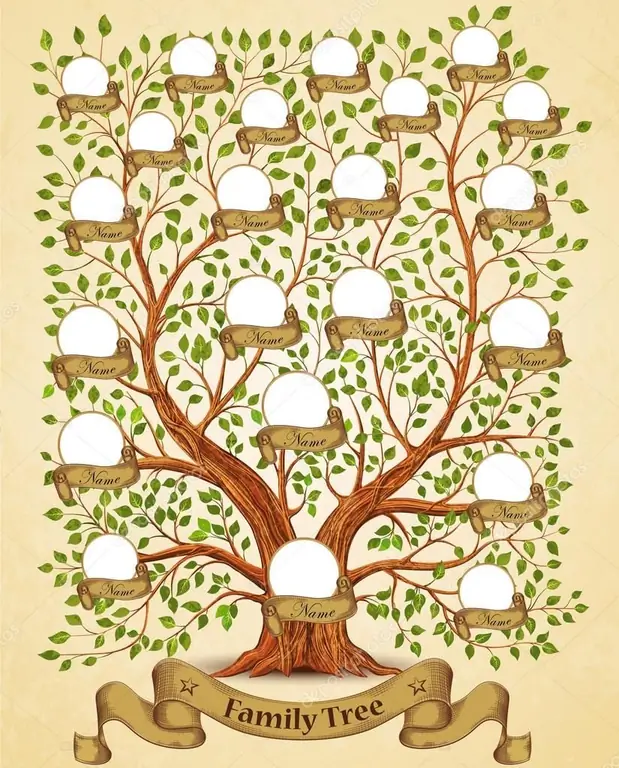- Author Antonio Harrison [email protected].
- Public 2023-12-16 07:44.
- Last modified 2025-01-22 21:44.
A pedigree or family tree (tree) is a graphical diagram of a genus that contains brief information about all known relatives. Traditionally, it was customary to depict this scheme in the form of a symbolic tree, the root of which was one common ancestor, and the branches and leaves represented his descendants. Today, interest in history, in their roots, is characteristic of many people. Therefore, the question of how to correctly make a family tree is becoming very common.

Instructions
Step 1
Building your own family tree is not as difficult as it seems at first glance. Anyone can cope with this task, even those who do not have the education of a historian or archivist. The main thing that is required for this is patience, perseverance in collecting information and the ability to work with archival documents.
Step 2
You need to start building a pedigree by collecting accurate information. And first of all, all living relatives of the older generation should be interviewed: parents, grandfathers, grandmothers, aunts and uncles. Particular attention in their stories should be paid to the full names of their ancestors, known dates of birth, death, marriage, as well as the most significant life events (moving to another city or village, studying at a university, place of work, participating in wars, etc..). If your relatives have any family archives (letters, diaries, photographs, even medical records or certificates), they should also be attached to the case.
Step 3
It is important to bear in mind that older people often have memory problems, so it is advisable to document all the information they tell. Of particular importance here will be birth and death certificates, marriage certificates, educational diplomas, housing documents with exact addresses. It is best to immediately write down all the information received in a single notebook or collect in a folder. Firstly, it will help to better remember the family history, and secondly, it will make it easier to organize the information received.
Step 4
When all possible family documents and information from relatives have been collected, you need to move on to working with archival data. You need to know that in our country, after the revolution, all information about births, deaths and marriages was recorded and stored in the registry office. According to Russian law, civil registration books are stored in the archives of the registry office for 75 years from the moment they were compiled, and then transferred to the state archives. Before the 1917 revolution. Church registers were kept in two copies, which are now in the archives of the dioceses and in state institutions. All this information can be obtained by any person on a personal request submitted to one or another archive.
Step 5
The collected information already in the process of work can begin to be drawn up in the form of a pedigree tree. It can be compiled either manually on paper or using computer programs. Contrary to traditional ideas, it is more convenient to draw up a genealogical scheme from top to bottom, starting with the oldest known ancestor. In addition to full names, the diagram should reflect the dates of birth and death, as well as family and marriage ties. Consanguinity is usually shown with a solid line, and marriage relations with a dotted line. If desired, photographs of members of the clan and brief information about their lives can also be added to the computer scheme.






